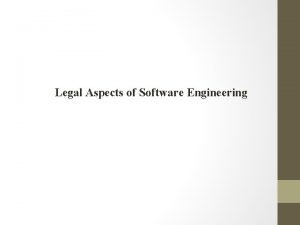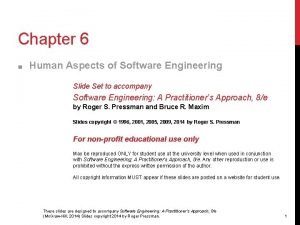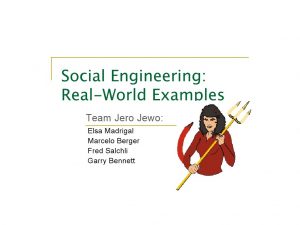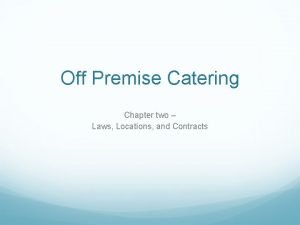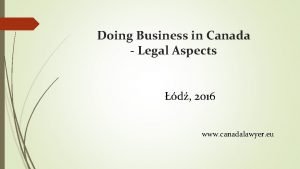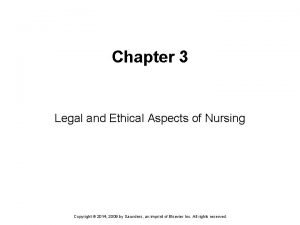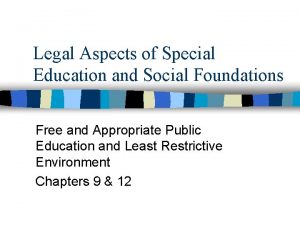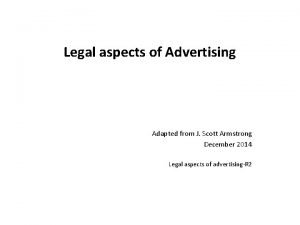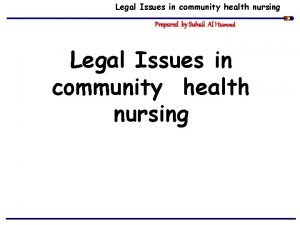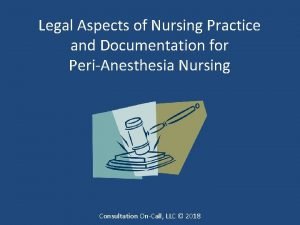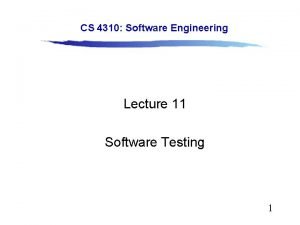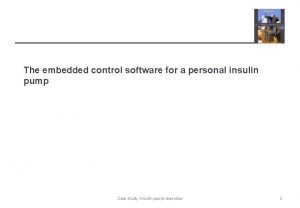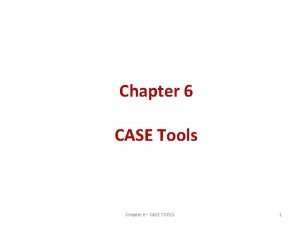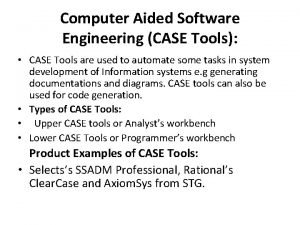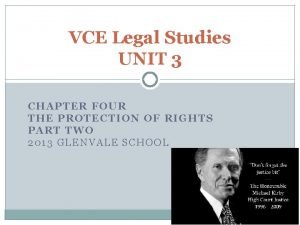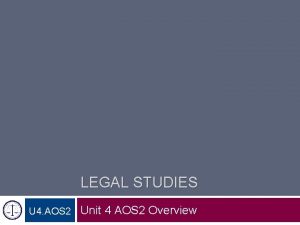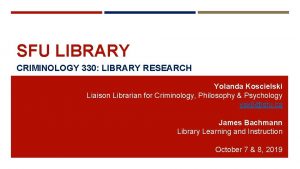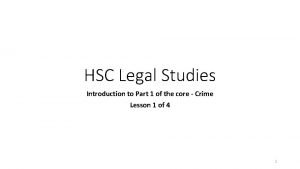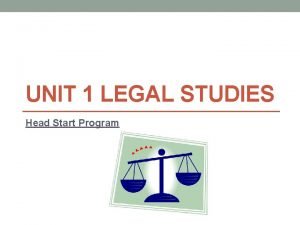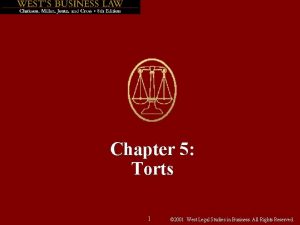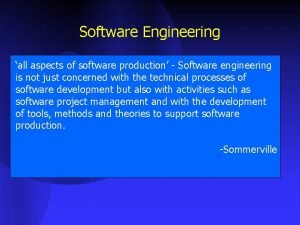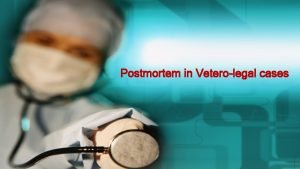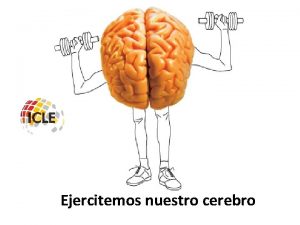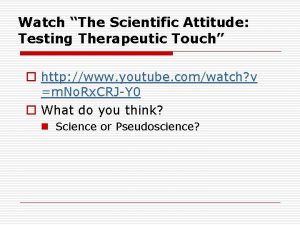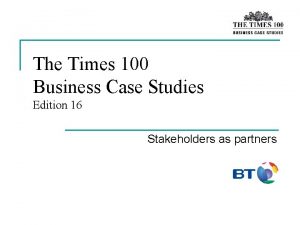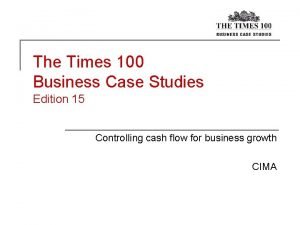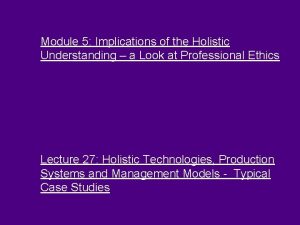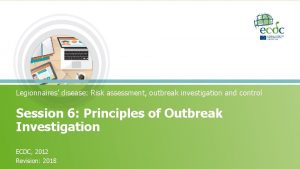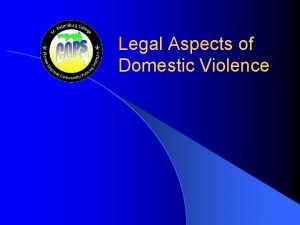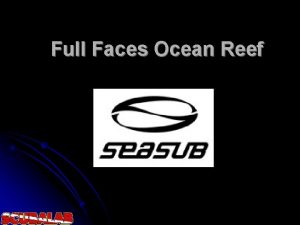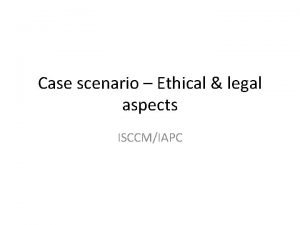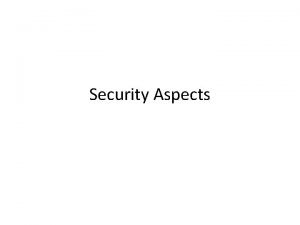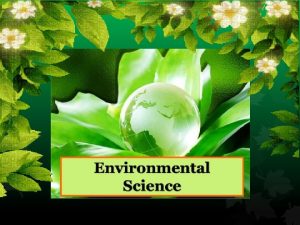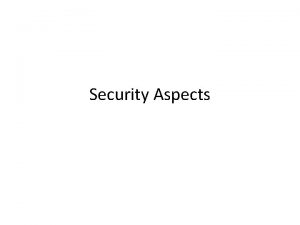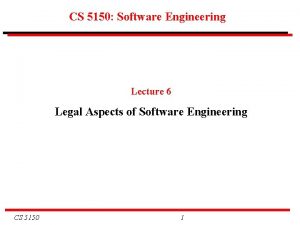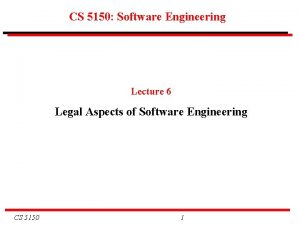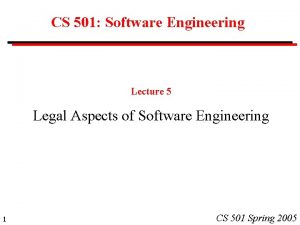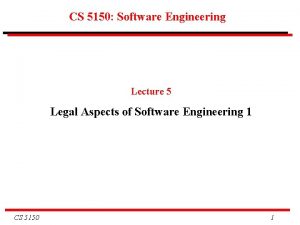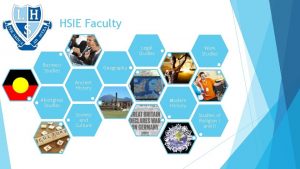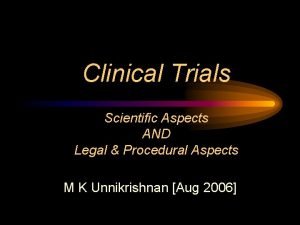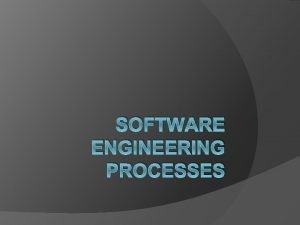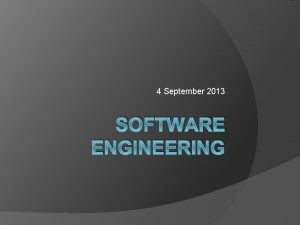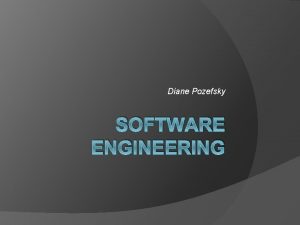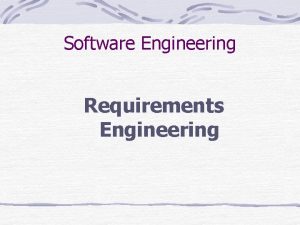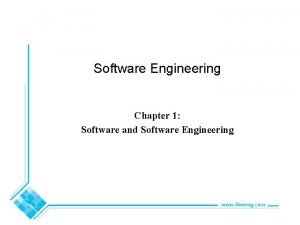Legal Aspects of Software Engineering Case Studies Full























![Example licenses /************************************* • * ADOBE CONFIDENTIAL • * Copyright [2002] - [2007] Adobe Example licenses /************************************* • * ADOBE CONFIDENTIAL • * Copyright [2002] - [2007] Adobe](https://slidetodoc.com/presentation_image_h/14f94841961aa543f904fc0ad4b15462/image-24.jpg)




















- Slides: 44

Legal Aspects of Software Engineering

Case Studies: • Full Screen Mario! • http: //www. fullscreenmario. com/ • UW-Madison • http: //www. jsonline. com/business/warf-wins-in-patent-suitagainst-apple-b 99596325 z 1 -332581992. html • Plagiarism • http: //www. npr. org/2014/10/26/358903514/did-led-zeppelinplagiarize-stairway-a-penn-judge-will-decide

Legal Environment Software is developed in a complex legal and economic framework. Every software developer needs to be aware of some parts of the framework. A senior manager or consultant will frequently work with lawyers. You need a lawyer for anything other than the most basic legal issues.

Legal Topics in Software • Jurisdiction (international, federal, state laws) • Intellectual property (copyright, patent, trademark, trade secrets) • Contracts and licenses • Privacy • Free speech and its limitations (government secrets, obscenity) • Commerce (ISPs, e-commerce) • Employment (personnel, your next job, etc. )

Statues and Precedents The United States follows Common Law. The law is a combination of: • Statutes (bills) passed by Congress and the 50 states. Examples? • Regulations issued by the government Examples? • HIPAA What ISPs can/cannot do Precedents (Common Law) (judgments) made by courts. Examples? IP (what is copyright infringement)

Intellectual Property (IP) • • • Copyright Patent Trade secret Trademark Why do we have IP laws?

Intellectual Property • Intangible creative works (the expression of ideas) • • Books Songs Art Movies Software Inventions Brands • IP has value • IP laws allow a creator to profit from their creation • Can be bought and sold • Each country has their own laws regarding IP • Enforcement is up to the “owner(s)” of the work • Public domain • Once legal protection runs out a work enters the public domain • Examples?

IP types • Copyright • • Protects creative work (1 of a kind) Protection is inherent when the work is created Last for a limited time (lifetime +70 yrs) Facts, ideas, concepts, processes, and methods of operation are not copyrightable • Patent • • Legally protects inventions of devices or processes Apply through the patent office Provides the holder a monopoly Last for a limited time (~20 years)

Other IP • Trademark • Symbol that identifies a product or company • Must be registered and approved to be internationally recognized • Must be “active” in the last 5 years • Others • Trade secrets • Industrial design rights Fullscreen Mario, where does it fall? ? ?

Intellectual Property Law: Copyright is Federal law, which applies to literary works. Originally applied to textual materials, but gradually extended to cover text, music, photographs, designs, software, . . . Copyright applies to the expression of ideas (e. g. , the words used), not to the ideas themselves, nor to physical items. Software Copyright applies to the program instructions, but not to the concepts behind the instructions, nor to the files on disk or on paper where the programs instructions are stored. Similar to book protections

Copyright In the USA, copyright gives the owner exclusive right to: • reproduce or copy • distribute • perform or execute • display • license others to reproduce, distribute, perform, or display Duration (Individual): Lifetime+70 years Duration (Corporation): 90 years Special exceptions • First sale. The owner of an object, e. g. , a book, can sell the object without permission of the copyright owner. • Fair use. Limited use is permitted without permission of the copyright owner, e. g. , in a review or short quotation.

Ownership of Copyright (USA) At creation • Copyright is automatically owned by the creator. You don’t even need to register it! (although you can) • Except works for hire, where the employer owns the copyright. Transfer of copyright • In the USA, copyright is property that can be sold or licensed. • The agreement is written as a contract.

Ownership of Software • If you are employed, copyright for the code that you write belongs to your employer • If you work free lance, have a contract with the organization that you are working for that is explicit about who owns the copyright in work that you do. • If you do not own the copyright, you need a license to copy, or use the software, even if you wrote the code (e. g. , you cannot make a copy for your personal use).

Copyright: Derivative Software When software is derived from other software: • Copyright in new code only is owned by new developer • Conditions that apply to old code apply to derived work If you write S, which includes code derived from A and B, you cannot copy, use, distribute or license S unless the copyright owners of both A and B give permission. When creating a software product, you should have documented rights to use everything from which it is derived. Example: Python distribution

Copyrights - Fair Use • Permission of the copyright holder is not always required • To use or distribute a work • Fair Use Criteria • Purpose • Commercial or for the general public’s enhancement • Nature • Creative or factual • Amount • Large or small • Effect • Reduce the value of the original work? • Vanilla Ice vs. David Bowie (http: //www. youtube. com/watch? v=kk 6 Nhj. D 3 Dbg) • Is the fair use doctrine adequate for defining ethics of IP?

A Fair(y) Use Tale • Video • http: //www. youtube. com/watch? v=CJn_j. C 4 FNDo

Fair Use Cases- Fair or not? • Videotaping TV broadcasts at home (or DVR) • Google displays thumbnail images of photos from a subscriptiononly website • Funky Drummer (Clyde Stubbelfield) • https: //www. youtube. com/watch? v=8 L 4 g. ITE 3 n. Uc • https: //www. youtube. com/watch? v=Hq. By. U 0 WCr 3 I • https: //www. youtube. com/watch? v=X 3 hu 0 dhi. Bxg • https: //www. youtube. com/watch? v=Uo. Kr_pc 5 gv. Q • https: //www. youtube. com/watch? v=t_v. SGk. S 3 t. CQ • https: //www. youtube. com/watch? v=0 x. MJZHr. G_94 • http: //www. thebreaks. com/search. php? term=Funky+Drummer&type=4 • How does this relate to CS? • What software can you “sample”?

Intellectual Property: Patents apply to inventions • Should be: non-obvious, novel, useful • Requires a complex process of patent application • 17 years from award (20 years from application) Copyright applies to the expression of ideas, patents to the ideas themselves. EX: http: //en. wikipedia. org/wiki/List_of_software_patents Patents make the idea public during the registration process What if you don’t want your idea made public? approval can take 5+ yrs https: //www. youtube. com/watch? v=3 bxcc 3 SM_KA&index=9&list=WL

Patents • • • Examples • Online shopping checkout (Amazon. com) • Creating a single file from multiple source files • Automatic answering of email • Sending messages to players in an online game • Image/audio formats (tiff, mp 3, gif, etc) • http: //patft. uspto. gov/netacgi/nph- Parser? Sect 1=PTO 1&Sect 2=HITOFF&d=PALL&p=1&u=%2 Fnetahtml%2 FPTO%2 Fsrchnum. htm&r=1&f=G&l=50&s 1=7, 640, 233. PN. &OS=PN/7, 640, 233&RS=PN/7, 640, 233 http: //sdt. bz/content/article. aspx? Article. ID=65268&page=1 • Technically “algorithms” are not patentable • Most companies circumvent this by using the terminology “system and method” Microsoft • 17, 000 patents • Own patents that legally prevent other companies from using the Linux kernel unless they pay Microsoft Google • 17, 000 patents • 2, 835 patents in 2016 IBM • 40, 000 active patents • 8, 088 patents in 2016 alone • • • 2700 AI patents alone in 2016! Every Tuesday the USPTO releases 3000+ new patents http: //en. wikipedia. org/wiki/List_of_top_United_States_patent_recipients


EFF Stupid Patents • https: //www. eff. org/deeplinks/2015/08/stupid-patent-month -drink-mixer-attacks-internet-things

Software IP • Copyright • Creative, 1 of a kind work • Long protection • Patent • Invention • Short protection • Where should software fall? • Invention vs. writing • Expression of ideas or an algorithm? • Patents are not supposed to be granted for “obvious” or in common use when patent is filed • How can this be determined with software patents?

Licensing your software • You will need to choose what license you will associate with your software • Closed source • You own the IP rights • Open source • You allow anyone else to modify and use the software • Any users of it cannot make it closed source* • How can money be made from open source software? • But we diverge…
![Example licenses ADOBE CONFIDENTIAL Copyright 2002 2007 Adobe Example licenses /************************************* • * ADOBE CONFIDENTIAL • * Copyright [2002] - [2007] Adobe](https://slidetodoc.com/presentation_image_h/14f94841961aa543f904fc0ad4b15462/image-24.jpg)
Example licenses /************************************* • * ADOBE CONFIDENTIAL • * Copyright [2002] - [2007] Adobe Systems Incorporated • * All Rights Reserved. • * NOTICE: All information contained herein is, and remains • * the property of Adobe Systems Incorporated and its suppliers, • * if any. The intellectual and technical concepts contained • * herein are proprietary to Adobe Systems Incorporated • * and its suppliers and may be covered by U. S. and Foreign Patents, • * patents in process, and are protected by trade secret or copyright law. • * Dissemination of this information or reproduction of this material • * is strictly forbidden unless prior written permission is obtained • * from Adobe Systems Incorporated. */

Example licenses /************************************* • * This program is free software: you can redistribute it and/or modify it under the terms • * of the GNU General Public License as published by the Free Software Foundation, • * either version 3 of the License, or (at your option) any later version. This program is • * distributed in the hope that it will be useful, but WITHOUT ANY WARRANTY; without • * even the implied warranty of MERCHANTABILITY or FITNESS FOR A PARTICULAR PURPOSE. • * See the GNU General Public License for more details. You should have received a copy • * of the GNU General Public License along with this program. If not, see • * <http: //www. gnu. org/licenses/>. */

GNU Public License Open sources software is an important part of modern computing that does not fit well into traditional contract law.

Open Source Software – Main Features • Non-proprietary software which may or may not be used commercially; • Typically licensed under an Open Source license (not given away) • License terms differ from proprietary software license terms • Source code is generally made available • Legal restriction on reverse engineering (under the DMCA) do not apply.

Open Source Software License - Licensees • Original software owner or developer chooses to limit the rights that he asserts over licensees • Licensees, subject to license terms, can: • make and distribute copies of software; • build upon software to create modifications or other works.

Is Mac OSX Open Source? Major components of Mac OS X, including the UNIX core, are made available under Apple’s Open Source license. But not the whole operating system. What about me? The Android operating system is open source. Except for version 3. 0. The Apps such as Gmail, the Market, and Google Maps are not open source.

Open Source Software Licenses - Source Code • Source code to original product always provided; • Licensee can modify or enhance source code • create “derivative works” • Licensee can include source code with other license types • create “larger works” • Licensee may be required to share modifications with the world (in source and/or binary form) • but not necessarily • Licensee may be prohibited from charging royalties for derivative and larger works • but not necessarily

Open Source Software License – Warranties and Support • Generally, software provided “AS-IS” with no warranties, warranties excluded; • No indemnification; • User cannot sue creator for liability reasons • No maintenance or support.

The GNU “General Public License” (GPL) • No standard open source license, but GPL most widely used • Roughly 85% of open source software • Terms include: • User freedom to distribute and/or modify; • Requirement that original and modified source code be always made available to the world under the terms of the original license; • Must retain copyright notices and warranty disclaimers; • Does not include grant of patent licenses; • Extremely viral license. • Sometimes called “copyleft” • http: //www. gnu. org/copyleft/gpl. html

The Apache Software License • Governs the Apache web-server software. • Terms include: • User freedom to distribute and/or modify; • No requirement for source code to be made available to the world in downstream distribution; • Must retain all copyright notices and warranty disclaimers; • Not a viral license. • http: //www. apache. org/licenses/LICENSE 2. 0. html

Summary: Existing open source licenses • Terms will always include preservation of copyright notices and warranty disclaimers; • Some licenses will be extremely viral: thus prohibiting any other type of downstream licensing apart from under the terms of the original license; • Some with permit inclusion of code within proprietized programs; • In some instances, provision of additional warranties and support will trigger indemnification provisions to the original developer.

Online resources • For a comprehensive chart describing and comparing open source licenses see http: //en. wikipedia. org/wiki/Comparison_of_fre e_software_licenses • For full open source license texts see http: //opensource. org/licenses

Advantages: Proprietary Software • Indemnification; • Maintenance and support; • Licensee doesn’t have to have open source savvy staff; • Licensees’ rights if: • media is defective; • software contains viruses, backdoors, etc. ; • product fails to meet written technical/business specifications.

Disadvantages: Proprietary Software • COST! • License fee • Product bundling—example: Microsoft office. • Licensee cannot modify or enhance the code; • Often not built to open standards, leading to interoperability problems; • Shut off from continuing development and information sharing in open source community; • Some proprietary code is not as good as its open source counterparts.

Advantages: Open Source License • PRICE: Generally no or low license fees; • Availability of source code coupled with permission to make modifications; • Access open source development community, which may be very active with respect to code used. Continuing improvement; outstanding development; • More likely to be built to open standards, so interoperable with other open standards systems.

Disadvantages: Open Source Licensing • No indemnification; if a third party claims that licensee is using code that the third party developed, the licensee has no one to pay his legal fees and damage award • No maintenance and support (unless purchased separately); • No warranties regarding media, viruses, and performance; • Staff must be open source savvy; • License terms are NOT standard: thus important to pay close attention to terms.

New Slides Follow

Additional Open Source license • https: //opensource. org/licenses/MIT • Permission is hereby granted, free of charge, to any person obtaining a copy of this software and associated documentation files (the "Software"), to deal in the Software without restriction, including without limitation the rights to use, copy, modify, merge, publish, distribute, sublicense, and/or sell copies of the Software, and to permit persons to whom the Software is furnished to do so, subject to the following conditions: • The above copyright notice and this permission notice shall be included in all copies or substantial portions of the Software. • Plus “AS IS” disclaimer

Software Patents – recent cases • Section 101 of title 35, United States Code, provides: • Whoever invents or discovers any new and useful process, machine, manufacture, or composition of matter, or any new and useful improvement thereof, may obtain a patent therefor, subject to the conditions and requirements of this title. • https: //en. wikipedia. org/wiki/Software_patents_under_Unite d_States_patent_law#Alice_case • More difficult to get a software patent after Alice case (which is a type of “business process/method patent”) • "Without additional limitations, a process that employs mathematical algorithms to manipulate existing information to generate additional information is not patent eligible. “

The IBM Public License • Terms include: • User freedom to distribute and/or modify; • No requirement for source code availability in downstream distribution; • The program can be distributed in executable form thus allowing downstream users to develop, sell, and install customized software packages without having to make all customizations available to the world; • Must retain all copyright notices and warranty disclaimers; • Includes grant of patent licenses. • http: //www. ibm. com/developerworks/library/os -i 18 n 2/os-ipl. html

Freeware • Freeware is free software, software that the licensee can use without paying a license fee. • Free software may be proprietary software for which source code is not provided • Adobe Acrobat • Linux Note: Not all open source software is free; not all proprietary software is licensed for a fee.
 Mario full screen
Mario full screen Human aspects of software engineering
Human aspects of software engineering Social engineering case studies
Social engineering case studies Legal aspects of catering premises
Legal aspects of catering premises Legal aspects of doing business in canada
Legal aspects of doing business in canada Legal and ethical aspects of nursing chapter 3
Legal and ethical aspects of nursing chapter 3 State legal ethical and professional aspects of security
State legal ethical and professional aspects of security Legal aspects of special education
Legal aspects of special education Legal aspects of advertising
Legal aspects of advertising Legal aspects of project management
Legal aspects of project management Legal issues in community health nursing
Legal issues in community health nursing Legal aspects of nursing documentation
Legal aspects of nursing documentation Legal issues in nursing documentation
Legal issues in nursing documentation Legal aspects definition
Legal aspects definition Best worst and average case
Best worst and average case Glennan building cwru
Glennan building cwru Use case model in software engineering
Use case model in software engineering Test case in software engineering
Test case in software engineering Case study a personal insulin pump
Case study a personal insulin pump Types of case tools in software engineering
Types of case tools in software engineering Advantages of case tools in software engineering
Advantages of case tools in software engineering Computer based system engineering in software engineering
Computer based system engineering in software engineering Forward engineering in software engineering
Forward engineering in software engineering Legal studies study design
Legal studies study design Legal studies unit 4 aos 2
Legal studies unit 4 aos 2 Legal studies sfu
Legal studies sfu Factors affecting criminal behaviour legal studies
Factors affecting criminal behaviour legal studies Legal studies unit 1
Legal studies unit 1 West legal studies
West legal studies Paradigm shift from women studies to gender studies
Paradigm shift from women studies to gender studies All aspects of software production
All aspects of software production Software maintenance process models ppt
Software maintenance process models ppt Frank maurer
Frank maurer Metrics computer science
Metrics computer science Types of software crisis
Types of software crisis What is software measurement
What is software measurement Real time software design in software engineering
Real time software design in software engineering Software design fundamentals in software engineering
Software design fundamentals in software engineering Veterolegal definition
Veterolegal definition Un agricultor tiene 3 montones en el prado y 4 en el pajar
Un agricultor tiene 3 montones en el prado y 4 en el pajar Advantages of descriptive research
Advantages of descriptive research Times 100 case studies
Times 100 case studies The times 100 business case studies
The times 100 business case studies Holistic technology in human values
Holistic technology in human values Advantages and disadvantages of case control studies
Advantages and disadvantages of case control studies
